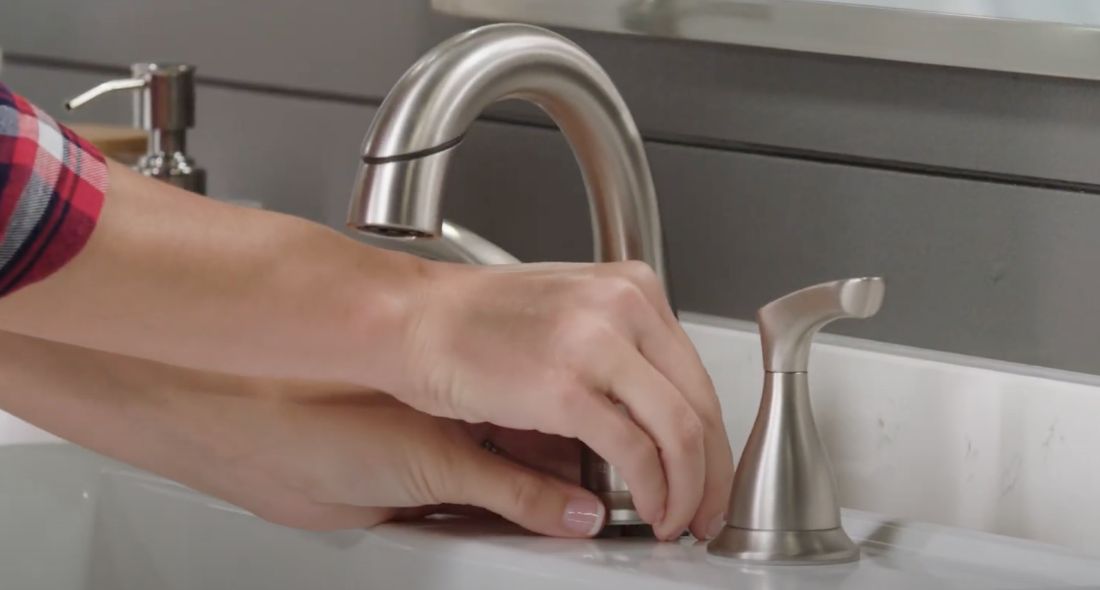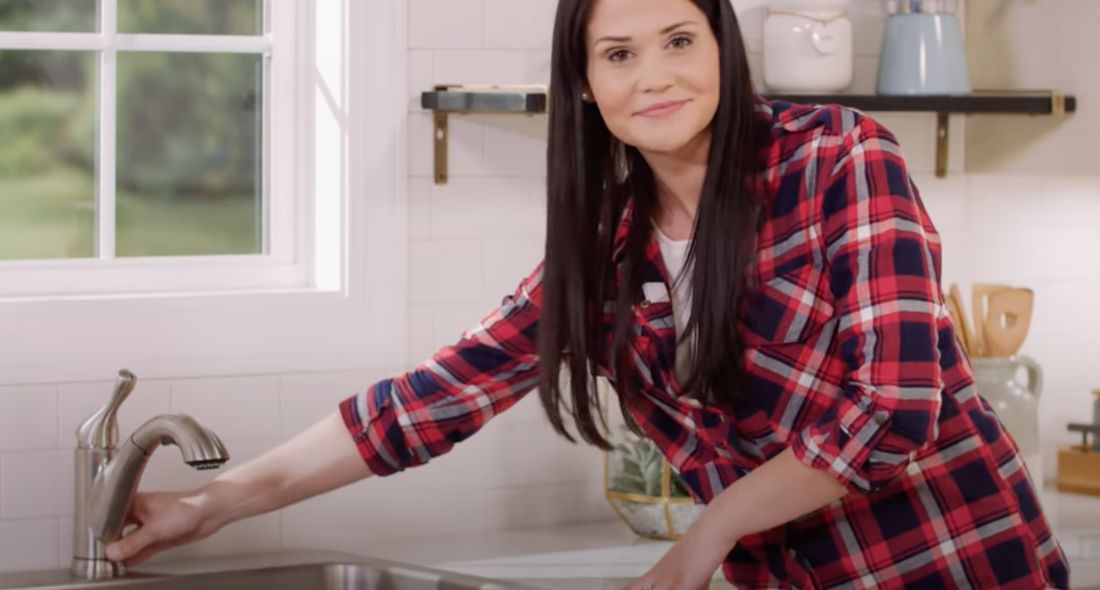What It's Important to Mend a Leaking Faucet
What It's Important to Mend a Leaking Faucet
Blog Article
They are making several good points on the subject of Should I Repair or Replace a Leaky Faucet? overall in the content underneath.

Leaking taps could look like a small inconvenience, however their influence goes beyond just the nuisance of the noise. From wasting water to sustaining unnecessary economic expenses and health and wellness dangers, overlooking a dripping faucet can lead to various consequences. In this short article, we'll explore why it's vital to address this usual home concern immediately and properly.
Wastefulness of Water
Environmental Influence
Leaking taps contribute substantially to water wastage. According to the Environmental Protection Agency (EPA), a solitary faucet leaking at one drip per secondly can lose greater than 3,000 gallons of water per year. This not only stress water sources yet also impacts ecological communities and wild animals dependent on them.
Financial Costs
Enhanced Water Expenses
Past the ecological influence, trickling taps can blow up water costs considerably. The gathered wastefulness with time converts right into greater energy costs, which might have been avoided with timely fixings.
Possible Property Damages
Moreover, prolonged dripping can bring about damage to fixtures and surface areas bordering the tap. Water accumulation can cause discoloration, corrosion, and even structural problems if left ignored, causing additional repair work costs.
Health and wellness Issues
Mold and Mildew Growth
The continuous existence of wetness from a leaking faucet creates a perfect environment for mold and mildew growth. These fungis not just jeopardize indoor air quality but also position health risks, particularly for people with respiratory problems or allergies.
Waterborne Conditions
Stagnant water in leaking taps can become a breeding ground for bacteria and various other virus, raising the threat of waterborne illness. Pollutants such as Legionella germs prosper in stagnant water, potentially leading to significant health problems when ingested or breathed in.
Do it yourself vs. Professional Repair
Pros and Cons of Do It Yourself Repair Work
While some might attempt to deal with a leaking tap themselves, DIY repairs include their very own set of difficulties. Without proper understanding and devices, DIY attempts can aggravate the issue or cause insufficient repairs, extending the trouble.
Advantages of Working With a Professional Plumber
Hiring an expert plumber makes sure that the underlying source of the trickling tap is addressed efficiently. Plumbing technicians have the expertise and equipment to identify and fix faucet issues efficiently, conserving time and lessening the risk of more damages.
Step-by-Step Guide to Dealing With a Dripping Faucet
Devices Needed
Before attempting to deal with a leaking tap, gather the necessary tools, consisting of an adjustable wrench, screwdrivers, substitute parts (such as washing machines or cartridges), and plumber's tape.
Common Tap Issues and Their Solutions
Identify the kind of tap and the particular issue triggering the drip. Usual problems consist of damaged washers, corroded shutoff seats, or faulty O-rings. Refer to producer instructions or on the internet tutorials for detailed advice on repair work.
Preventive Measures
Routine Upkeep Tips
To prevent dripping faucets, do regular upkeep such as cleansing aerators, inspecting for leaks, and replacing worn-out parts promptly. Additionally, consider installing water-saving devices or updating to extra reliable components.
Value of Prompt Fixes
Attending to leaking faucets as soon as they're seen stops additional water wastage and prospective damage, ultimately conserving both water and money in the long run.
Influence On Property Worth
Understanding of Well-Maintained Property
Keeping a residential property in good condition, including resolving maintenance problems like trickling faucets, boosts its perceived worth and worth among prospective buyers or renters.
Impact on Resale Value
Qualities with well-maintained plumbing fixtures, consisting of taps, command higher resale values in the realty market. Resolving dripping faucets can contribute to a positive perception throughout property evaluations and settlements.
Environmental Obligation
Private Payment to Preservation
Taking obligation for fixing dripping faucets aligns with more comprehensive initiatives towards water preservation and environmental sustainability. Every individual's actions jointly make a substantial influence on protecting valuable resources.
Lasting Living Practices
By prioritizing punctual fixings and embracing water-saving practices, people add to sustainable living techniques that profit both present and future generations.
Verdict
Dealing with a dripping tap goes beyond plain benefit; it's an essential action towards saving water, minimizing financial prices, and guarding health and home. Whether via do it yourself repair work or expert aid, acting to fix leaking taps is a small yet impactful means to promote liable stewardship of resources and contribute to a much healthier, much more lasting future.
How to Fix a Dripping or Leaky Faucet
A leaking faucet is one of the most common problems that homeowners encounter, but it being commonplace doesn’t make it any less annoying. The constant drip drip drip of a leaking bathtub faucet, showerhead, or sink tap can disturb your home’s serenity. Left neglected, a dripping faucet can also result in higher water bills and discoloration or mold growth in your sink or plumbing fixtures.
Fortunately, you don’t have to be a trained plumber to know how to stop a dripping faucet. With some basic tools, replacement parts, and a little patience, leaky faucet repair is a breeze. In this article, we’ll explain what causes dripping faucets and how you can fix them.
What Causes a Leaking Faucet?
Kitchen and bathroom faucets come in all manner of designs, but most involve some combination of valves, O-rings, seals, and washers. The O-ring is usually the weakest link, but any one of these pieces can wear down over time. Heat, moisture, temperature fluctuations, minerals, mold, and movement can contribute to warping and corrosion, breaking the watertight seal. This just comes with the territory of being a homeowner. Everything is always subject to wear and tear, and some component parts of your appliances and fixtures need to be replaced on occasion. At least replacement O-rings are cheap!
More rarely, dripping faucets can be a symptom of excessively high water pressure. Were this the case in your home, you would probably notice that the leak is not isolated to one faucet. Water pressure issues are harder to resolve on your own. We recommend contacting a professional plumber if you suspect your water pressure is too high.
How to Fix a Dripping Faucet
Pipe wrench or monkey wrench Allen wrench set Screwdrivers Old towel or rag Shut off the water.
Before you do anything, you need to turn off the water to keep from drenching your kitchen or bathroom. You should find a valve under the sink and against the wall. Once you’ve turned this valve, try turning the faucet on to confirm that the water source has been cut off.
If you can’t locate your local valve for the faucet you’re working on, you can always shut off the water to the house at the main valve. Of course, this will prohibit anyone from using the sinks, showers, or toilets while you’re working on the faucet that’s giving you trouble.
Plug or block the drain.
You’ll be disassembling the faucet and removing some small bits of hardware. Plug the drain with a stopper or rag to avoid the possibility of a small screw falling into your P-trap.
Take apart the faucet assembly.
There are several varieties of kitchen and bathroom faucets, each with its own manner of assembly. For detailed instructions on how to disassemble your faucet, you can refer to the fixture’s manual or contact the manufacturer. If you know whether you have a ball, disc, cartridge, or compression faucet, you can find detailed schematics online.
In general, you need to begin by removing the faucet handles. You might notice a small screw that you’ll need to remove with a screwdriver or Allen wrench. If you don’t see any visible securing hardware, it’s likely hidden under a decorative cap that can be unscrewed or popped off with flathead screwdriver.
Remove each piece methodically, consulting a schematic when necessary. Take notes or arrange the pieces in such a way to make it easier to correctly reassemble the faucet later.
Remove the cartridge.
Once you’ve removed the handles and securing hardware, you should be able to remove the valve cartridge or stem. Some cartridges will slide right out. Other faucet models will require you to loosen a nut with a pipe wrench before you can remove the valve stem.
Examine the exposed hardware.
With the cartridge or stem removed, inspect the component parts. Check the rubber O-rings for wear and tear. Also examine the seat washer for corrosion or other damage. These pieces are usually the responsible parties for a dripping faucet, but it’s worth inspecting the other component parts while you have the faucet disassembled.
Find replacement parts.
Once you’ve identified which faucet component has failed, find an identical replacement. Your local hardware store should have O-rings, seat washers, and other standard components in stock. If you have a luxury or uncommon faucet, you may have to contact the manufacturer for a replacement part.
It’s a good idea to take your old parts with you to the hardware store so you can compare them with the store’s inventory and be sure you’re purchasing the correct replacement.
Reassemble the faucet.
With your new parts in hand, reconstruct the faucet and handles. Don’t be tempted to overtighten screws or nuts. You might think this could create a better seal, but it can instead damage or bend a delicate part of the assembly and create a new problem for you.
Turn on the water and test the faucet.
The only thing left to do is test your work. Unplug the sink, turn the water back on, and try the faucet. Congratulate yourself on a job well done!
https://www.libertyhomeguard.com/how-to-fix-a-dripping-or-leaky-faucet/

As a serious person who reads about What Causes Leaky Faucets & How To Fix Them, I imagined sharing that post was worth the trouble. For those who enjoyed our article please be sure to share it. I take joy in your readership.
Report this page